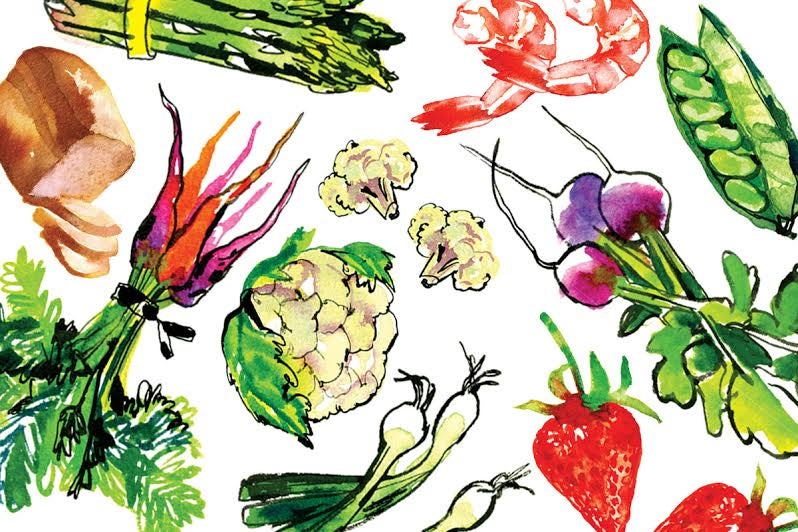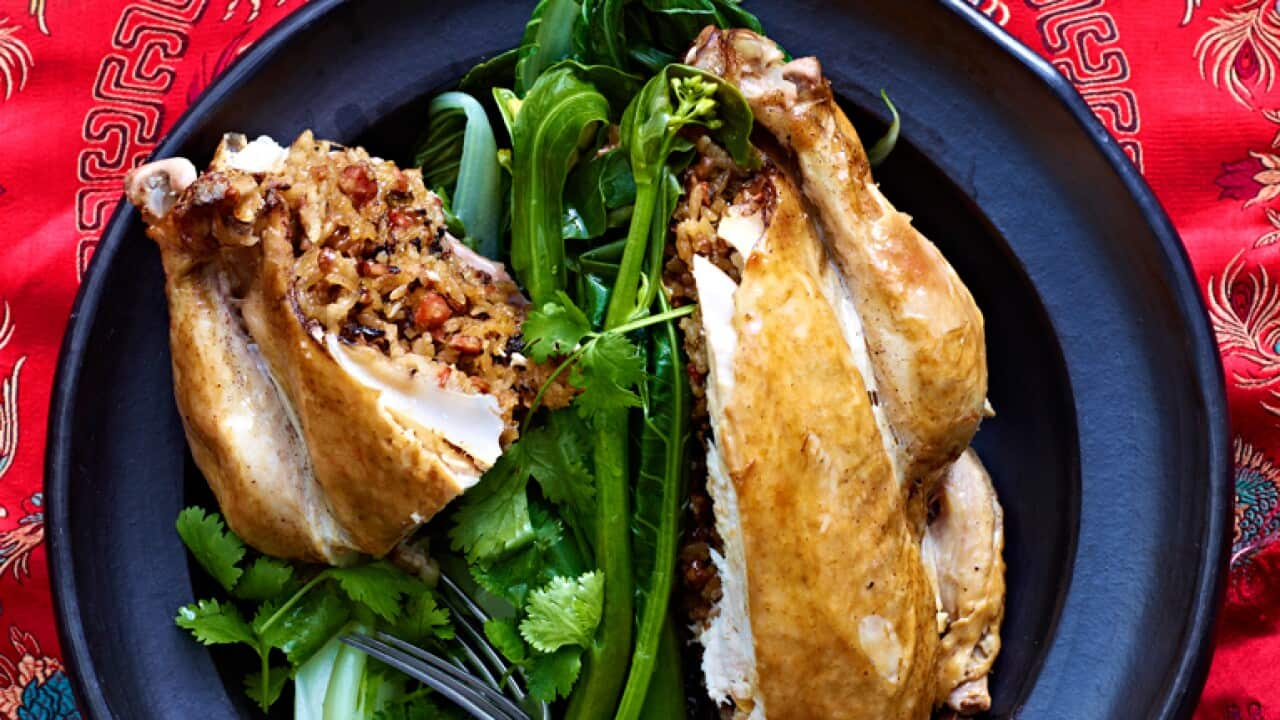Beggar's chicken
富贵鸡, jiao hua ji, fugui ji
Beggar's chicken is a Chinese dish of chicken that is stuffed, wrapped in clay and lotus leaves (or banana or bamboo leaves as alternatives), and baked slowly using low heat. Preparation of a single portion may take up to six hours. Although the dish is traditionally prepared with clay, the recipe has evolved; for convenience and safety it is often baked with dough, oven bags, ceramic cooking pots, or convection ovens. Beggar's chicken is very popular in China, with many regions claiming it as traditionally their own. Most experts agree the dish originated in Hangzhou. The clay-wrapped method of slow cooking is thousands of years old. Various legends surround the origins of beggar's chicken.[failed verification][unreliable source?] In one, a beggar stole a chicken from a farm but having no pot or utensils, he wrapped the bird in lotus leaves and packed clay or mud around it, set it in a hole where he had lit a fire, and buried it. When he dug up the chicken and cracked open the clay, he found the meat was tender and aromatic. In other versions, the beggar stole the chicken from the emperor and used the mud-hole method to avoid smoke that might attract the imperial guards. Alternatively, the emperor stopped to dine with the beggar and so enjoyed the dish that he added it to the imperial menu and the beggar prospered by selling the dish to locals. Another legend, the dish was a childhood favorite of Emperor Gaozu of Han, who had been born a peasant. When he became emperor, the recipe became an imperial specialty. Finally, in another legend, during the 17th century toward the end of the Ming dynasty in Changshu, saying that politician and Koxinga's mentor Qian Qianyi met the beggar who made the impromptu dish and had his chefs improved the recipe.
Source: Wikipedia


